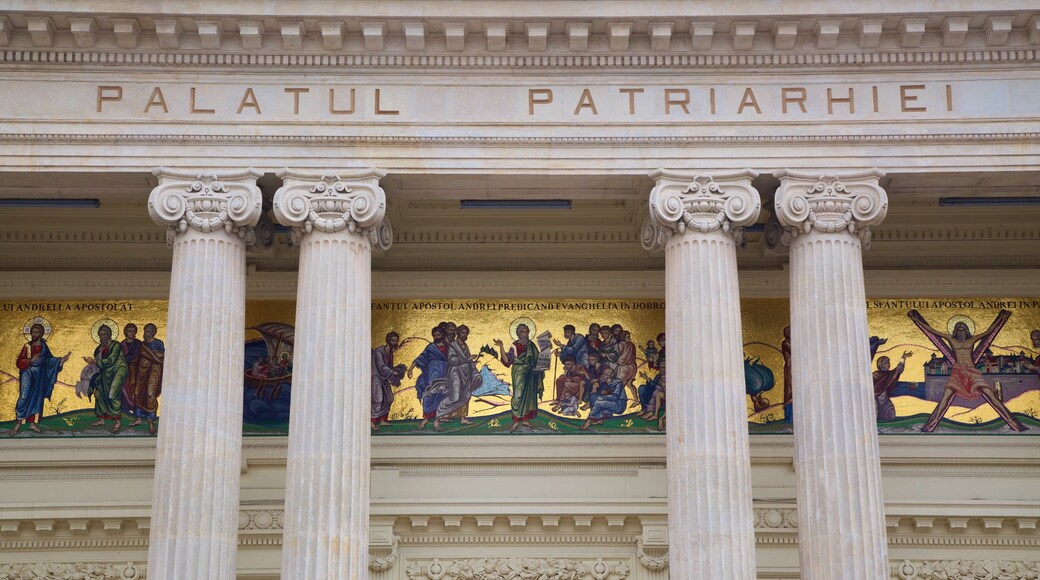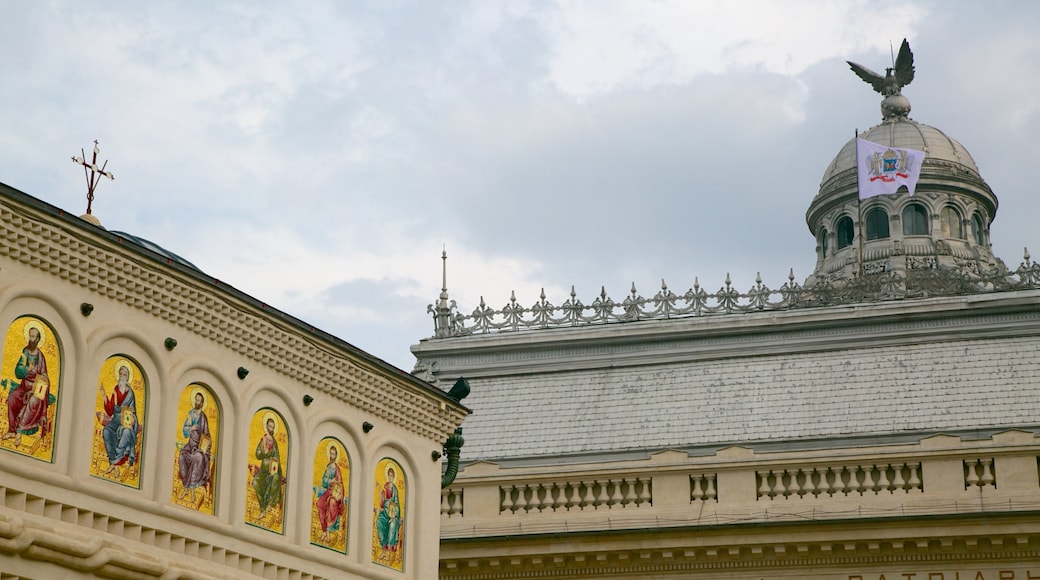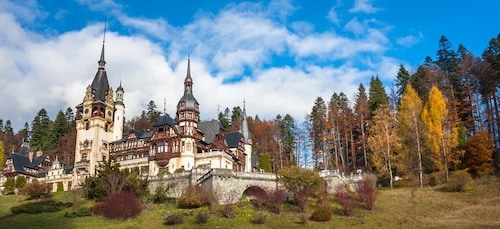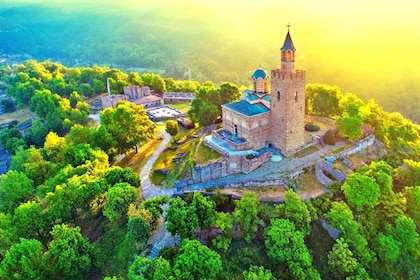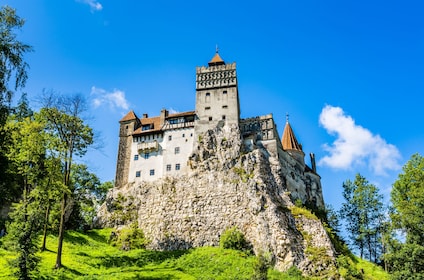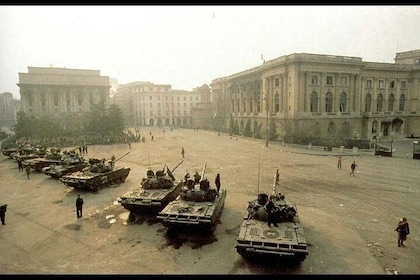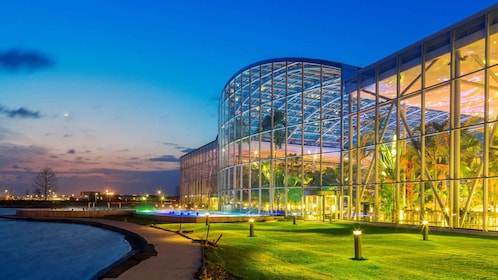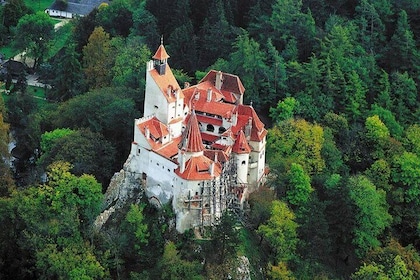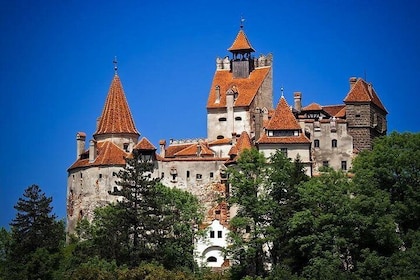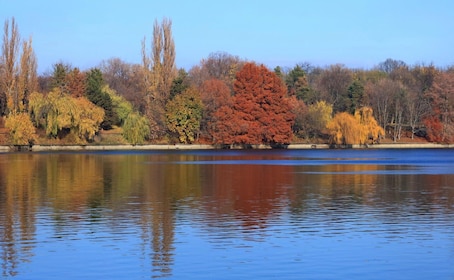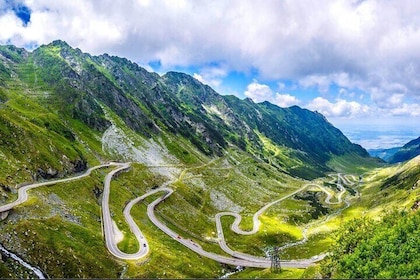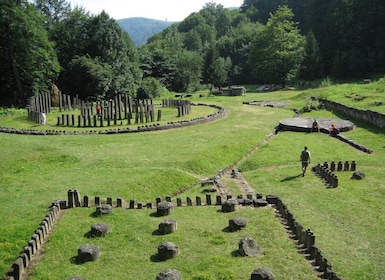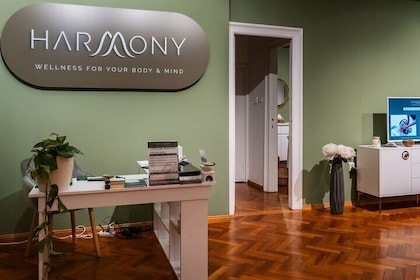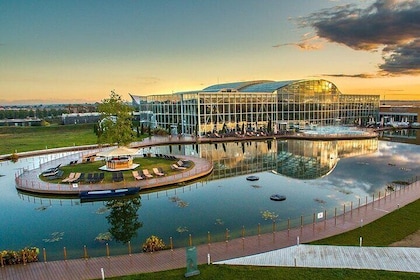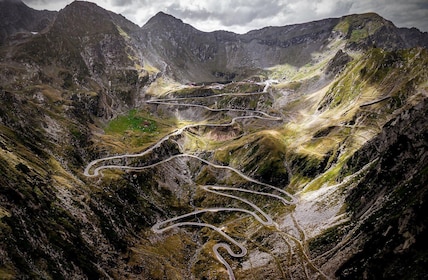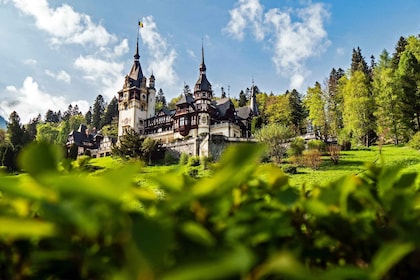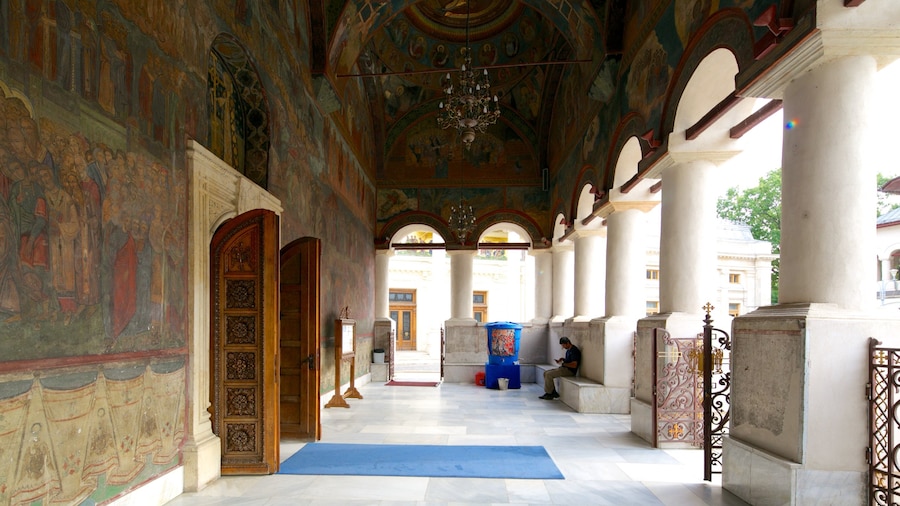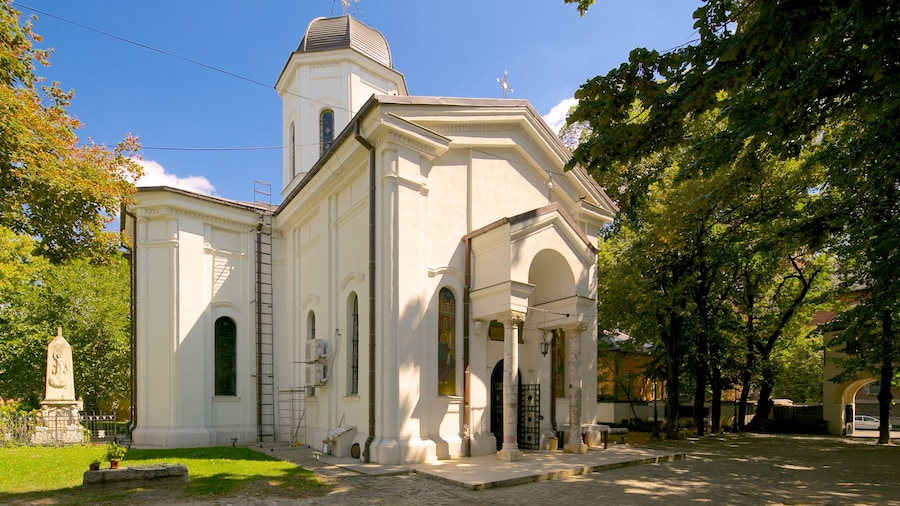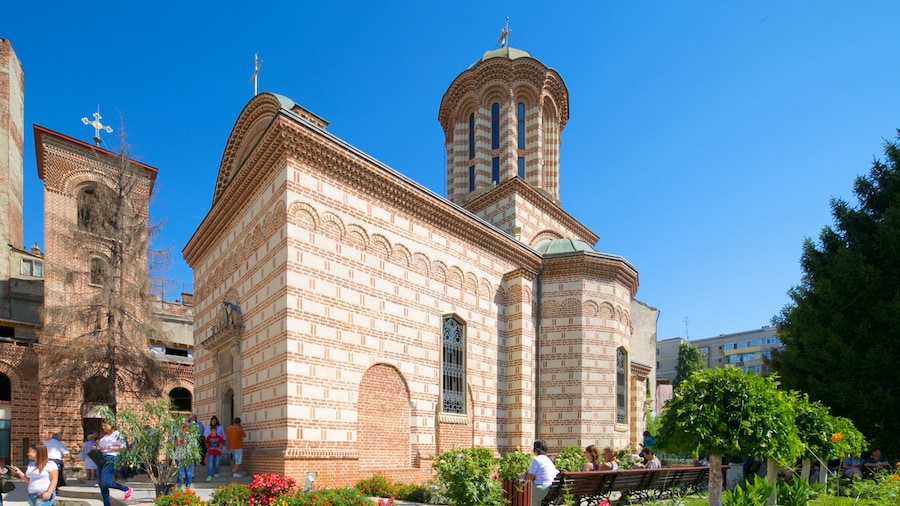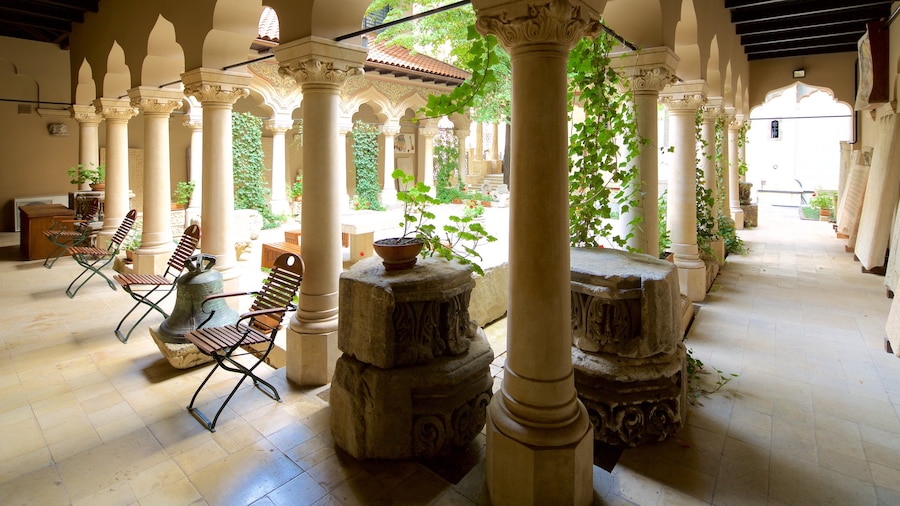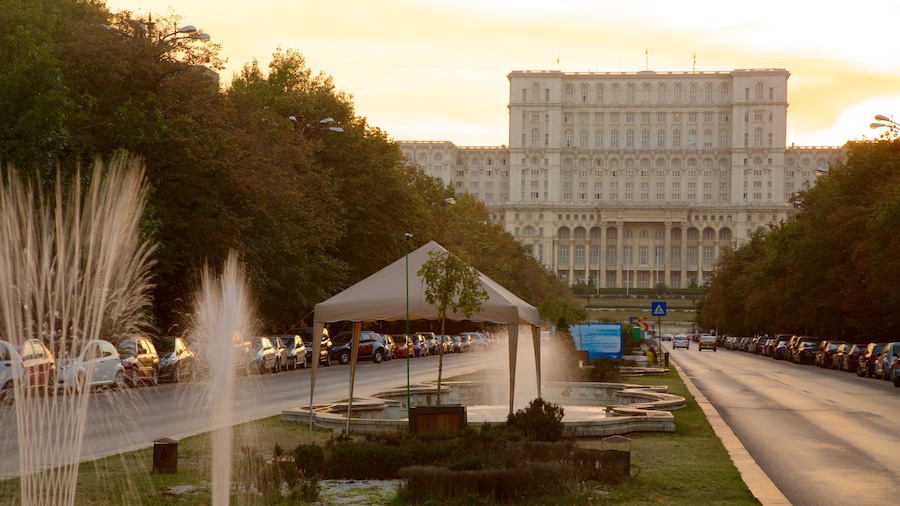Admire the neoclassical architecture of this 20th-century palace, which is a prominent feature of a hilltop complex of historic and religious landmarks.
The Patriarchal Palace (Palatul Patriarhiei) stands on Metropolitanate Hill, the site of a former monastery that is now home to buildings of religious and historical importance. Built in 1908, today the palace serves as a conference center, event venue and administrative offices of the Romanian Patriarchate. Visit the site to appreciate its striking neoclassical design and see other attractions located on the impressive hill.
Stand at the entrance to the Patriarchal Palace to marvel at its imposing façade, designed by Bucharest-born architect Dimitrie Maimarolu. The entrance is a peristyle columned porch dominated by six large Ionic-style pillars. Note the intricately carved capitals and the palace’s name etched into the wall directly above the pillars.
Crowning the roof of the palace is a copula topped by a statue of an eagle. It bears similarities to the copula of the Romanian Athenaeum. Natural light floods into the palace’s exterior via the dome’s windows. Inside are auditoriums, richly decorated meeting rooms and paintings of significant figures from Romania’s political history. These are, however, not accessible unless you are attending an event.
While here, visit the other landmarks located on Metropolitanate Hill. Among these is the attractive Brâncovenesc-style Romanian Patriarchal Cathedral, first built in 1650. Adorning the entrance are mosaics of famous saints. Inside is a wonderful collection of Byzantine-style frescoes. Romania’s first Prime Minister, Barbu Catargiu, was assassinated in front of the cathedral in 1862.
Public buses, trams and the metro provide easy access to the Patriarchal Palace and Metropolitanate Hill. Piaţa Unirii 1 is the nearest metro station, which is less than a 10-minute walk away. Major city attractions, such as the Lipscani neighborhood and Palace of Parliament, are a 20-minute walk away. Stroll along Bulevardul Unirii, a boulevard lined with fountains, flowerbeds and trees. It is often called Bucharest’s Champs-Élysées.
Visit the Patriarchal Palace any day. The Romanian Patriarchal Cathedral is also open daily and admission is free.



